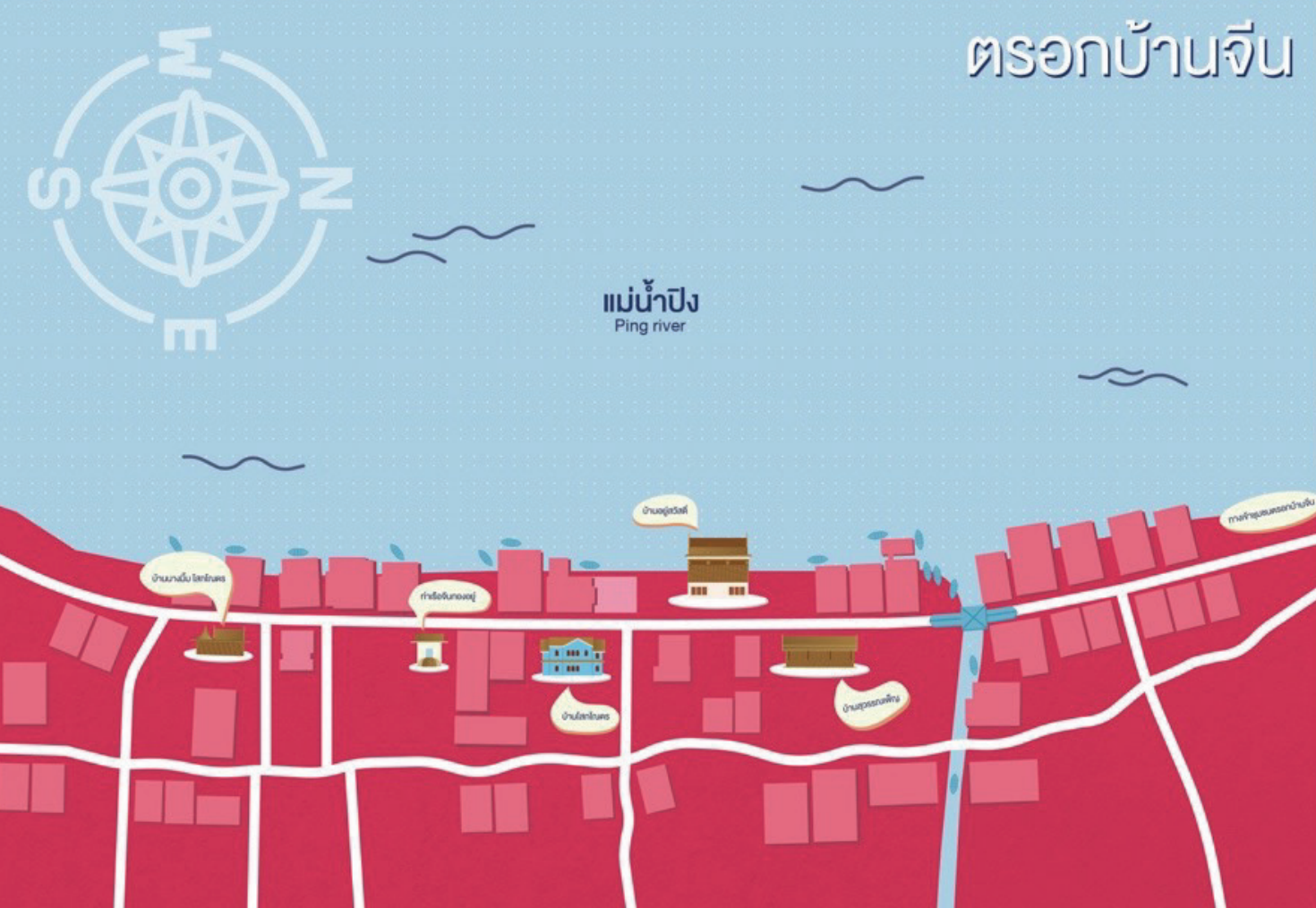Souvenir Design Concept from an Old Building in the Trok Ban Chin Community, Tak Province
DOI:
https://doi.org/10.69598/decorativeartsjournal.2.96%20-%20115Keywords:
Trok Ban Chin Community, souvenir, designAbstract
Designing a souvenir concept from an old building in the Trok Ban Chin community, Tak Province, with the objective 1) To study the history, including various arts and local culture. 2) to design souvenirs from ideas from old buildings in the Trok Ban Chin community, Tak Province, conducting research By conducting a study to collect information on documents. and by conducting in-depth interviews with experts about the history of the Trok Ban Chin community in Tak Province. The information obtained was then used to determine guidelines for designing souvenirs based on ideas from the old buildings of the Trok Ban Chin community.
The results of the research found that : 1) The uniqueness of each house makes it an interesting and impressive tourist spot for those interested in the history and culture of this community. The researcher chose the top 4 houses in the Trok Baan Chin community that had the most tourists taking photos, as follows:
1.1) Baan Sophonon (South) is a large Thai wooden house consisting of several houses, including a twin bedroom with a passage through the middle of the two houses. The kitchen and slave house are made of cotton wood and hold the various elements together according to the ancient technique of carving. The roof is tall, the tile is burnt, the screen is carved and the wind is molded. There are curved doors used as a way down to the water. The house features parallel walls along the axis of the streets along the houses of China and the Pining River.
1.2) The Yusawat family house is composed of a large house and a kitchen with two welded houses together. The whole house is made of wood and contains various elements. Included in the ancient technique, the carved roofs are tall, the soil tile mosquitoes are decorated with western wood patterns, ranging from the cutting machine to the windscreen, the ventilation channels and the barracks, as well as the assumption that the curved walls under the man have some similarities in common to the contemporary English architecture in the country.
1.3) Wongseri Family House is a Thai house in the suburban class. The large house is adjacent to the front of the house, it is a shopping area for people. The door is like a barbecue that can be opened in front during commercial hours. The interior will be home to family members. The back is a large mess and the bathroom, which is the first back house with a bathroom.
1.4) The Suwanpen family house is a one-storey merchant house. It is housed under a high-rise roof pavement. The elements of the building are made of wood from the roots, poles, wall floor, doors, windows, and housing elements. They are combined according to the traditional technique of carving. The appearance of the front of the street is that the Chinese houses are a commercial part. People meet, therefore, the doors are fuzzy. They can be opened all the way to trade and closed at night. There are bars for sale. Most of the floors are lifted from the stairs. The house owners can sit and sleep.
The researcher used the information obtained from the study to create models of all 5 houses in the ratio of 1:125 with details close to the real ones.
2) Based on the analysis of consumer behavior, we have designed a Chinese community logo, one pattern, five fold-up panels, five models of souvenirs.
References
นครินทร์ น้ำใจดี. (2555). แนวทางการพัฒนาการจัดการแหล่งการเรียนรู้ตรอกบ้านจีน ตำบลระแหง อำเภอเมืองตาก จังหวัดตาก. วิทยานิพนธ์ศิลปศาสตรมหาบัณฑิต สาขาวิชาการจัดการทรัพยากรวัฒนธรรม มหาวิทยาลัยศิลปากร.
บริษัท สถาปนิก สุข จำกัด. (2562). โครงการอนุรักษ์และฟื้นฟู ตรอกบ้านจีน เมืองตาก. สืบค้นเมื่อ 15 ธันวาคม 2566 จาก https://www.facebook.com/profile.php?id=100070125623356
ประดับดาว สิทธิวงศ์. (2560). หุ่นกระบอกคณะสังวาลศิลป์ จังหวัดตาก. วิทยานิพนธ์ศิลปศาสตรมหาบัณฑิต สาขาวิชาวิทยาการดนตรีและนาฏศิลป์ มหาวิทยาลัยนเรศวร.
ศาลากลางเมืองตาก. (2501). เรื่องเมืองตาก. ธนบุรี : โรงพิมพ์โรงเรียนการช่างวุฑฒิศึกษา.
สำนักงานวัฒนธรรม จังหวัดตาก. (2566). สืบค้นเมื่อ 21 กันยายน 2565, จาก https://www.trokbanchintak.com/page-about-2/
สำรวย โลกพันธ์ไพบูลย์. (2528). ประวัติศาสตร์เมืองตาก. หนังสือที่ระลึกเนื่องในงานตากสินมหาราชานุสรณ์ และ งานกาชาด จังหวัดตาก. ม.ป.ท.

Downloads
Published
How to Cite
License
Copyright (c) 2023 DEC Journal

This work is licensed under a Creative Commons Attribution-NonCommercial-NoDerivatives 4.0 International License.
Published by Academic Affairs Division, Faculty of Decorative Arts, Silpakorn University. The copyright of the article belongs to the article owner. Published articles represent the views of the authors. The editorial board does not necessarily agree with and is not responsible for the content of such articles.


